From "sea soldiers" to "black death"
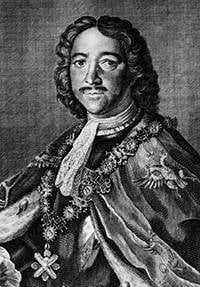 This year, the next, already 305, in a row, the anniversary will be celebrated by one of the most famous branches of the troops of the domestic Armed Forces - the marines. The epochs changed, the state system changed in the country, the colors of the banners, the uniform and armament changed. One thing remained unchanged - the high skill and high moral and psychological level of our marine, who represented the image of a true hero who could break the will of the enemy with a formidable look. For more than three centuries of existence, the marines have covered themselves with undying glory in almost all major wars and armed conflicts that our state has waged.
This year, the next, already 305, in a row, the anniversary will be celebrated by one of the most famous branches of the troops of the domestic Armed Forces - the marines. The epochs changed, the state system changed in the country, the colors of the banners, the uniform and armament changed. One thing remained unchanged - the high skill and high moral and psychological level of our marine, who represented the image of a true hero who could break the will of the enemy with a formidable look. For more than three centuries of existence, the marines have covered themselves with undying glory in almost all major wars and armed conflicts that our state has waged."Sea Regiment"
First in stories Our country’s regiment of the Marine Corps, called the "Marine Regiment" and formed under Admiral Franz Lefort during the famous expedition of Peter I in 1696, comprised 28 companies and provided invaluable assistance in the siege of the enemy fortress. The tsar was considered only a captain (commander) of the 3rd company of the same regiment. “Marine Regiment” was not a regular formation, it was formed only on a temporary basis, but the experience gained led Peter I to make the final decision on the need to “formally” form marine corps as part of the Russian fleet. So, already in September-October 1704, in the Discourse on the Beginning of a Fleet on the Baltic Sea, the Russian emperor pointed out: “It is necessary to establish regiments of sea soldiers (looking at the number of fleets) and divide them into captains forever, to which corporals and sergeants should be taken from old soldiers for the sake of a better training system and order. "
However, the course of the 1705 summer campaign that followed in the near future made Peter I change his mind and, instead of scattered teams, form a single naval regiment intended for service in the boarding-landing teams on warships of the Russian fleet. Moreover, given the complex nature of the tasks assigned to the "sea soldiers", it was decided to staff the regiment with not just recruits recruited, but at the expense of already trained soldiers from army regiments. The matter was entrusted to General Admiral Count Fyodor Golovin, who on November 16 of 1705 gave the order to Vice-Admiral Cornelius Cruys, Commander of the Baltic Fleet on the Baltic Sea, order: “I must have a naval regiment to have, according to the order of His Majesty, so that he was a soldier in 1200, and that belongs to that, like a gun and in other ways, please unsubscribe to me and do not need to leave others; and how many of them all have a number or a great score has been added, then we will find recruits for the trails. ” This date, November 16 old style, or November 27 style new, 1705, and is considered the official birthday of the national marines.
Subsequently, taking into account the experience of the Northern War, the marines were reorganized: instead of a regiment, several naval battalions were created - the “vice-admiral battalion” (the tasks of service were assigned as part of the boarding and landing teams on the squadron vanguard ships); "Admiral's battalion" (the same, but for the ships of the center of the squadron); "Rear Admiral Battalion" (rear-guard squadron ships); “Galley battalion” (for galley fleet), as well as “admiralty battalion” (for guard duty and other tasks in the interests of the fleet command). By the way, during the Northern War, for the first time in the world, a large amphibious compound was formed in Russia - a corps of more than 20 thousand people. So in this we are ahead of even the Americans, who took similar steps only during the Second World War.
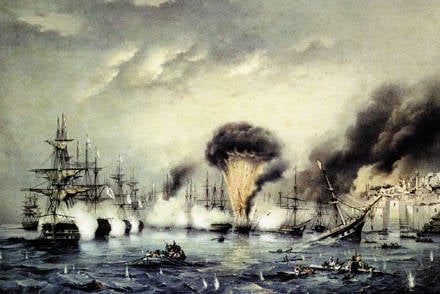
From Corfu to Borodino
Since then, our marines have taken part in many battles and wars that have become fateful for Russia. Fought on the Black and Baltic Seas, stormed the fortifications of Corfu, which were considered impregnable, landed in Italy and the Balkans, fought even in battles over land, hundreds and thousands of kilometers from the sea coast. The commanders repeatedly used the Marine Corps battalions, famous for their swift onslaught and powerful bayonet attack, as assault detachments in the directions of the main attack in many battles.
The detachments of the marines took part in the famous assault of Ishmael - three of the nine assault columns attacking the fortress were made up of naval battalion personnel and coastal grenadier regiments. Alexander Suvorov noted that the Marines "showed amazing courage and zeal", and in his report he noted among the most distinguished eight officers and one sergeant of naval battalions and almost 70 officers and sergeants of the coastal grenadier regiments.
During the famous Mediterranean campaign of Admiral Fyodor Ushakov, there were no field troops in his squadron at all - all the tasks of storming coastal installations were solved by the marines of the Black Sea Fleet. Including - took by storm from the sea Corfu fortress, which was previously considered impregnable. Having received the news of the capture of Corfu, Alexander Suvorov wrote famous lines: “Why wasn’t I at Corfu, although I’m a midshipman!”.
Even under the seemingly completely “land-based” village of Borodino, and then the marines managed to distinguish themselves and gain the glory of formidable warriors - defensive and fast in the offensive. On the land fronts of the Patriotic War 1812 of the year, two brigades of naval regiments were formed, consolidated into the 25 Infantry Division. In the battle of Borodino after the injury of Prince Bagration, the left flank of the Russian troops retreated to the village of Semenovskoye, the Life Guards Light Company No. 1 and the artillery of the Guards Navy Crew came forward - for several hours the sailors with only two guns repelled powerful enemy attacks and fought with the French gunners. For the battles of Borodino, naval gunners were awarded the Order of St. Anne 3 (Degree A.I. Liszt and Unter-Lieutenant I. P. Kiselev) and the insignia of the Military Order of St. George (six sailors).
Few people know that in the battle at Kulm in 1813, soldiers and officers of the Guards Navy Crew, which was the only one in the history of our country and, perhaps, Europe, which was not just a ship crew, but also an elite infantry battalion.
The marines did not stay aside in the Crimean War 1854 – 1855, in the Russian-Turkish war 1877 – 1878, in the Russian-Japanese war 1904 – 1905 and, naturally, in the First World War, during which a number of Baltic countries distinguished units and units of the Marine Corps, which took part in operations to defend naval bases and islands and solved the tasks assigned to them as part of the landing forces. According to the experience of military operations in the 1916 – 1917 years, the formation of two divisions of the marines began in the Black and Baltic Seas, which, however, did not have time to accomplish for obvious reasons.
At the same time, however, due to the short-sighted policy of the military-political leadership, especially the naval infantry, more than once, the army command, obsessed with the "land character of the country", was subjected to a disastrous reorganization and even complete elimination, transferring its parts to the ground forces. For example, despite the high effectiveness of the combat use of units of the Marine Corps and the Guards Navy crew during the wars with Napoleonic France, in 1813, the units of the marines were transferred to the army department and over the next almost 100 years the fleet did not have any large marines . Even the Crimean War and the defense of Sevastopol could not convince the Russian leadership of the need to recreate the marines as a separate kind of military. Only in 1911, the Main Marine Headquarters developed a project for the creation of permanent "infantry units" at the disposal of the command of the main naval bases - a regiment in the Baltic Fleet and a battalion - in the Black Sea Fleet and in the Far East, in Vladivostok. Moreover, parts of the Marine Corps were divided into two types - for action on the ground and for action on the marine theater.
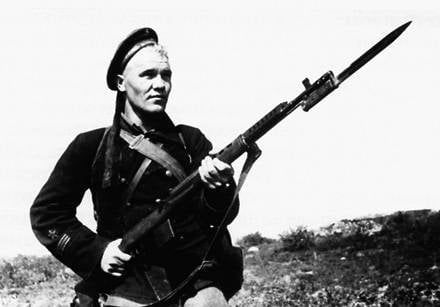
Soviet marines
And those events that we have called the Kronstadt mutiny? There, the marines and artillerymen of the coastal batteries, forming the backbone of the disgruntled anti-revolutionary, in their opinion, policies of the then leadership of the Soviet Republic, showed considerable resilience and courage, reflecting for a long time the numerous and powerful attacks of a huge mass of troops thrown at the suppression of the uprising. There is still no unequivocal assessment of those events: there are supporters of both. But no one doubts the fact that the sailors' detachments showed unbending will and did not show even a drop of cowardice and weakness even in the face of the enemy many times over.
As a part of the Armed Forces of the young Soviet Russia, officially there was no marine infantry, although in 1920, the 1-I naval expeditionary division was formed on the Sea of Azov, which solved the problems typical of the marine infantry, took an active part in eliminating the threat from the landing of General Ulagay and contributed to the extrusion White Guard troops from areas of the Kuban. Then, for almost two decades, there was no talk of marine infantry, only 15 January 1940 of the year (according to other data, it happened 25 April 1940 of the year) according to the order of the People's Commissar of the Navy created a year earlier, a separate special rifle brigade was reorganized into the 1 th special marine brigade infantry of the Baltic Fleet, which took an active part in the Soviet-Finnish war: its personnel participated in the landings on the island of Gogland, Seskar, etc.
But most fully all the spiritual strength and military skill of our marines revealed, of course, during the bloodiest war in the history of mankind - the Second World War. On its fronts, the 105 of the Marine Corps (hereinafter the MP) fought: one division of the MP, 19 of the MP brigades, 14 of the MP regiments and 36 of individual MP battalions, and also 35 of the sea infantry brigades. It was then that our marines deserved the nickname “black death” from the enemy, although in the first weeks of the war German soldiers, confronted with fearless Russian soldiers who rushed to the attack in their vests, gave the marines the nickname “striped death”. During the war years, which had a predominantly land nature for the USSR, the Soviet marines and naval rifle brigades 125 once landed as part of various landings, the total number of units that took part in which reached 240 thousand people. Acting on their own, the Marines — on a smaller scale — landed during the war back to the enemy 159 times. Moreover, the overwhelming majority of the assault forces landed at night, so that by the onset of dawn, all units of the airborne detachments landed on the shore and occupied the positions assigned to them.
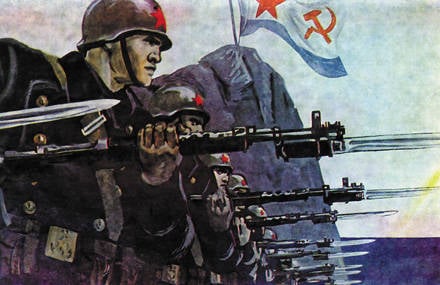
People's war
Already at the very beginning of the war, in the most difficult and difficult 1941 for the Soviet Union, the Soviet Navy allocated 146899 people for land operations, many of whom were qualified specialists of the fourth and fifth years of service, which, of course, damaged the fleet’s combat readiness, but such was the harsh necessity. In November - December of the same year, the formation of separate marine infantry brigades began, which then formed 25 with a total number of 39052 people. The main difference between a naval rifle brigade and a brigade of marines was that the former was intended for combat operations as part of land fronts, and the latter for combat operations on coastal directions, mainly for the defense of naval bases, airborne and anti-landing mission solutions, etc. In addition, there were also units and units of the ground forces, in the names of which there was no word “sea”, but which were mainly staffed by seamen. Such units can also, without any reservations, be attributed to the marines: during the war years, a total of six guards rifle and 15 rifle divisions, two guards rifle, two rifle and four mountain rifle brigades were formed on the basis of marines and formations a significant number of sailors also fought as part of the 19 Guards Rifle and 41 Rifle Divisions.
In total, during the 1941-1945, the Soviet Navy command formed and sent parts and formations of a total of 335875 men (including 16645 officers) to various sectors of the Soviet-German front, which made up almost 36 divisions in the army states of the time. In addition, in the fleets and flotilla acted part of the Marine Corps, numbering even before 100 thousands of people. Thus, only on the shore, almost half a million sailors fought shoulder to shoulder with the soldiers and commanders of the Red Army. Yes, as a war! According to the recollections of many military commanders, the command tried to always use naval rifle brigades on the most critical sectors of the front, firmly knowing that the sailors would steadfastly hold their positions, causing great damage to the enemy with fire and counterattacks. The attack of the sailors was always swift, they "literally rammed the German troops."
In the course of the defense of Tallinn, units of a total of more than 16 thousand men fought on the shore, which accounted for more than half of the entire Tallinn group of Soviet troops, numbering 27 thousand men. In total, the Baltic Fleet during the Second World War formed one division, nine brigades, four regiments and nine battalions of marines totaling more than 120 thousand people. During the same period, the Northern Fleet formed and sent three brigades, two regiments and seven marine battalions of 33480 men to various sectors of the Soviet-German front. The Black Sea Fleet accounted for about 70 thousand men in the Marine Corps - six brigades, eight regiments and separate battalions 22. One brigade and two battalions of the Marine Corps, formed in the Pacific Fleet and taking part in the defeat of militarist Japan, were transformed into guards.
It was the units of the marine corps that thwarted the attempt of the 11th Army, Colonel General Manstein and the mechanized group of the 54th Army Corps, to seize Sevastopol at the end of October 1941 - by the time German troops were under the city of Russian naval glory, the troops departing through the Crimean the mountains of the Primorsky Army have not yet reached the naval base. Moreover, often the formation of the Soviet Marine Corps experienced a serious shortage of infantry and other weapons, in ammunition and communications. So, taking part in the defense of Sevastopol, the 8th brigade of the MP at the very beginning of that illustrious defense for 3744 personnel included 3252 rifles, 16 easel and 20 light machine guns, as well as 42 mortars, and the 1st Baltic Army, which was newly formed and arrived at the front The MP brigade was provided with small arms only 50% of the supply according to the supply standards, without any artillery, cartridges, grenades, or even engineer blades!
Such a report of one of the defenders of the island of Gogland, dated March 1942, was preserved: “The enemy stubbornly climbs on our points, filled up a mass of his soldiers and officers, and they all climb ... There are still many enemies on the ice. Our machine gun cartridges left two tapes. We have a machine gun (in the bunker. - Auth.) There are three people left, the rest are killed. What would you do? ”On the order of the garrison commander to defend to the last came a succinct answer:“ But we don’t think to withdraw - the Balts do not withdraw, but destroy the enemy to the last. ” People stood to death.
In the initial period of the battle for Moscow, the Germans managed to approach the Moscow-Volga canal and even force it north of the city. The 64-I and 71-I naval infantry brigades were sent to the canal area, dropping the Germans into the water. Moreover, the first compound consisted mainly of Pacific sailors, who, like the Siberians of General Panfilov, helped to defend the capital of the country. In the area of the village of Ivanovo, the Germans tried several times to take against the seamen the 71 of the naval brigade of Colonel Ya. Bezverkhov, it is ridiculous to say “mental” attacks. The marines quietly let the nazis go up to their full length with dense chains and then almost point-blank shot them, finishing off those who had not managed to escape in the melee.
About 100 thousands of sailors took part in the grand battle of Stalingrad, of which only in the 2 Guards Army were up to 20 thousands of sailors from the Pacific Fleet and the Amur Flotilla — that is, every fifth soldier in the army of Lieutenant General Rodion Malinovsky (the latter subsequently recalled: “The Sea - Pacific Ocean fought great. The fighting was an army! Sailors - brave warriors, heroes! ").
Self-sacrifice is the highest degree of heroism
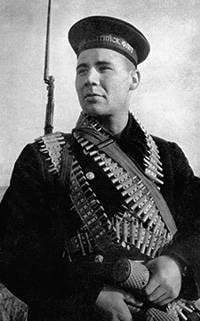 “When the tank approached it, it lay free and prudently under the caterpillar” - these are lines from the work of Andrei Platonov, and they are dedicated to one of those marines who stopped a German column near Sevastopol tanks - a historical fact that formed the basis of the feature film.
“When the tank approached it, it lay free and prudently under the caterpillar” - these are lines from the work of Andrei Platonov, and they are dedicated to one of those marines who stopped a German column near Sevastopol tanks - a historical fact that formed the basis of the feature film.The German tanks stopped the sailors with their bodies and grenades, which were exactly one for each brother, and therefore each grenade had to get into a German tank. But how to achieve with this one hundred percent efficiency? A simple solution does not come from the mind, but from a heart overflowing with love for one’s Motherland and hatred for the enemy: one must tie a grenade to one’s body and precisely lie under the caterpillar of a tank. The explosion - and the tank got up. And after political strike commander Nikolai Filchenko, who commanded the battle gate, they pushed the second under the tanks, followed by the third. And suddenly something unimaginable happens - the surviving Nazi tanks rose and backed away. The German tankers simply could not stand the nerves - they tried in the face of such terrible and incomprehensible to them heroism! It turned out that armor is not high-quality steel of German tanks, armor is Soviet sailors dressed in thin vests. Therefore, I would like to recommend to those of our compatriots who admire the traditions and valor of Japanese samurai, to look at the history of their army and navy - there he will easily find all the qualities of professional fearless warriors in those officers, soldiers and sailors who for centuries defended from different foe our country. These, our own, traditions and must be maintained and developed, and not to bow before an alien life.
By order of the People's Commissar of the Navy of the USSR of July 25, 1942, the Northern Defensive Region of 32 thousand people was formed in the Soviet Arctic, based on three marines and three separate machine gun battalions of the marine corps and which for more than two years ensured the stability of the right flank of the Soviet German front. Moreover, in complete isolation from the main forces, the supply was carried out only by air and by sea. Not to mention the war in the harsh conditions of the Far North, when in the rocks you can neither dig a trench, nor hide from aviation or artillery fire, is a very difficult test. It is not for nothing that a proverb was born in the North: "Where the reindeer passes, the marine will pass, and where the reindeer does not pass, the marine will pass anyway." The first Hero of the Soviet Union in the Northern Fleet was the senior sergeant of the Marine Corps V.P. Kislyakov, who was left alone at an important height and held back the enemy's onslaught of more than a company for more than an hour.
Famous at the front, Major Caesar Kunikov in January 1943, became the commander of the consolidated amphibious assault force. He wrote about his subordinates to his sister: “I command the sailors, if you could see what kind of people this is! I know that in the rear sometimes people doubt the accuracy of newspaper paints, but these paints are too pale to describe our people. ” A detachment of just 277 people who landed in the Stanichka area (the future Small Land) so frightened the German command (especially when Kunikov openly transmitted a false radiogram: "The regiment landed successfully. We are moving forward. Waiting for reinforcements") that it hastily transferred there units two divisions!
In March, 1944 of the year distinguished a detachment under the command of Senior Lieutenant Konstantin Olshansky, consisting of 55 Marines 384 Battalion of the Marine Corps and 12 soldiers from one of the neighboring units. For two days this “landing in immortality,” as it was called later, distracted the enemy in the port of Nikolaev, repelled the 18 attacks of the enemy’s combat group numbering three infantry battalions with the support of half tanks and gun batteries, destroying soldiers and officers to 700, as well as two tanks and all artillery battery. Only 12 people survived. All 67 fighters of the squad was awarded the title Hero of the Soviet Union - a unique case even for the Great Patriotic War!
During the offensive of the Soviet troops in Hungary, the boats of the Danube Flotilla constantly provided fire support to the advancing troops, and landed assault forces, including as part of the units and units of the marines. For example, the Marine Corps battalion landed on 19 in March 1945 of the year in the Tata area, and cut off enemy escape routes along the right bank of the Danube. Realizing this, the Germans threw large forces against a not very large landing force, but the enemy did not succeed in dropping the paratroopers into the Danube.
For displaying the heroism and courage of 200, the marines were awarded the title Hero of the Soviet Union, and the famous intelligence officer Viktor Leonov, who fought in the Northern Fleet and then stood at the origins of the naval reconnaissance and sabotage units of the Pacific Fleet, was awarded this award twice. And, for example, the personnel of the landing of senior lieutenant Konstantin Olshansky, whose name is today named one of the large amphibious assault ships of the Russian Navy, landed in March 1944 of the port of Nikolaev and at the cost of his life fulfilled the task assigned to him in full. It is less known that out of the full cavaliers of the Order of Glory - and there are only 2562 of them all, there are four Heroes of the Soviet Union, and one of these four is a marine infantry officer P.H. Dubinda, who fought in the 8 Brigade of the Black Sea Fleet Marine Corps .
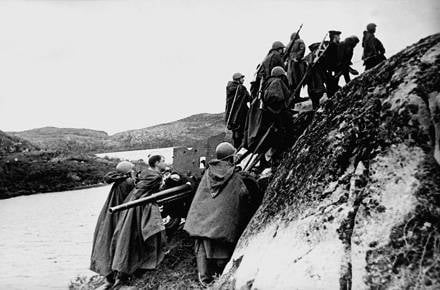
Separate parts and connections were noted. Thus, the 13, 66, 71, 75 and 154 brigade of marines and infantry brigades, as well as the 355 and 365 battalions of the marines were transformed into Guards units, many units and formations became Red Banner, and 83 and 255-I brigade - even twice the Red Banner. The marines' great contribution to achieving a common victory over the enemy was reflected in the order of the Supreme Commander No. 371 from 22 in July 1945: “During the defense and offensive of the Red Army, our fleet reliably covered the Red Army’s flanks, which had rested in the sea, severely attacked the commercial enemy fleet and shipping and ensured the uninterrupted operation of its communications. The combat activities of the Soviet sailors were distinguished by selfless perseverance and courage, high combat activity and military skill. ”
It remains to be noted that many well-known heroes of the Great Patriotic War and future commanders fought in the marine corps and naval infantry brigades. Thus, the creator of the Airborne Forces Hero of the Soviet Union, Army General VF Margelov, during the war years, was one of the best commanders of the marines' regiments - he commanded the 1-m special ski regiment of the marines of the Leningrad Front. Major General T.M. Parafilo, commander of the 1943 Airborne Division, who left 7 Special (Separate) Marine Brigade of the Baltic Fleet in its time, came out of the Marine Corps and died in 1 of the year. At various times in the various formations of the Marine Corps during the Second World War, such well-known military leaders fought as Marshal of the Soviet Union N. V. Ogarkov (in 1942, Brigade Engineer of the 61 of the separate naval rifle brigade of the Karelian Front), Marshal of the Soviet Union S. F. Akhromeev (in the 1941 year - a cadet of the first year at the VVMU named after M.V. Frunze - a fighter of the 3-th separate brigade of marines), Army General N. G. Lyashchenko (in the 1943-year - the commander of the 73-th separate naval rifle brigade Volkhov Front), Colonel General I. M. Chistyakov ( 1941-1942 years - commander 64-th Marine Infantry Brigade).
Comments, as they say, are superfluous ...
Information